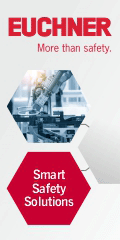
Posted to News on 16th Jul 2020, 09:34
New visual guide addresses EC-640/2009 regulation changes
WEG has released a visual guide to explain the impending stricter requirements for motor ecodesign, which have been approved by the European Commission (EC). The scope of the updated regulations now covers more motor types, including motors for hazardous areas, and will hold them to higher standards of efficiency. In response, WEG has made its new guide available to download from its website.
Previously, the ecodesign requirements for electric motors, Commission Regulation (EC) 640/2009, only applied to 3-phase motors ranging from 0.75kilowatts (kW) to 375kW. It specified IE3 class efficiency as the minimum requirement with IE2 class allowed when used with a variable speed drive. Electric motors outside of this power range were excluded from the regulation, with exemptions for hazardous area motors amongst others.
This is set to change from July 2021 when the updated regulation will require that all new 2-, 4-, 6- and 8-pole electric motors in the 0.75 to 1000kW power range meet the IE3 classification. This will be regardless of whether or not they are combined with a VSD, and the ruling will also apply to electric motors for hazardous environments. Additionally, for the first time ever, VSDs will be held to energy efficiency standards and expected to meet there own IE2 classification. This is all explained in the new guide from WEG.
One reason for the stricter EC No 640/2009 regulation is that is has become increasingly hard to regulate IE2 motors combined with VSDs. Some users choose to not use a VSD at all. Marek Lukaszczyk of WEG says: "We understand the confusion from motor users, particularly surrounding the classification of VSDs. Interestingly, the IE2 rating of a VSD isn't equivalent to an IE2 rating of an electric motor - they are measured differently." In other cases, with no obligation to implement high levels of energy efficiency, some businesses opt for lower-efficiency motors because of the reduced upfront cost. Lukaszczyk explains: "This approach has limited advantages, because the cost involved is only a small percentage of the whole lifecycle cost of owning and running a motor. Instead, by adhering to the new regulations, businesses can opt for high-efficiency motors from the outset and reap long-term cost savings."
WEG's guide is designed to highlight the benefits that are available if businesses adhere to the updated EC No 640/2009 standard. For more information on the stricter ecodesign regulations for motors, download WEG's guide here.
Want the latest machine building news straight to your inbox? Become a MachineBuilding member for free today >>















